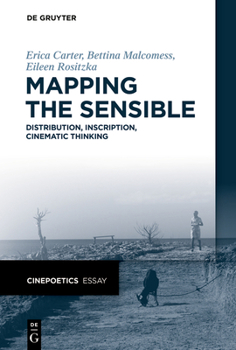Mapping the Sensible: Distribution, Inscription, Cinematic Thinking
In academic and public discourse, 'mapping' has become a ubiquitous term for epistemic practices ranging from surveys of scholarly fields to processes of data collection, ordering and visualization. Mapping captures patterns of distribution, segregation and hierarchy across socio-cultural spaces and geographical territories. Often lost in such accounts, however, is the experiential dimension of mapping as an aesthetic practice with determinate...
Format:Paperback
Language:English
ISBN:3110768984
ISBN13:9783110768985
Release Date:December 2022
Publisher:de Gruyter
Length:167 Pages
Weight:0.54 lbs.
Dimensions:0.4" x 6.1" x 9.2"
Customer Reviews
0 rating





